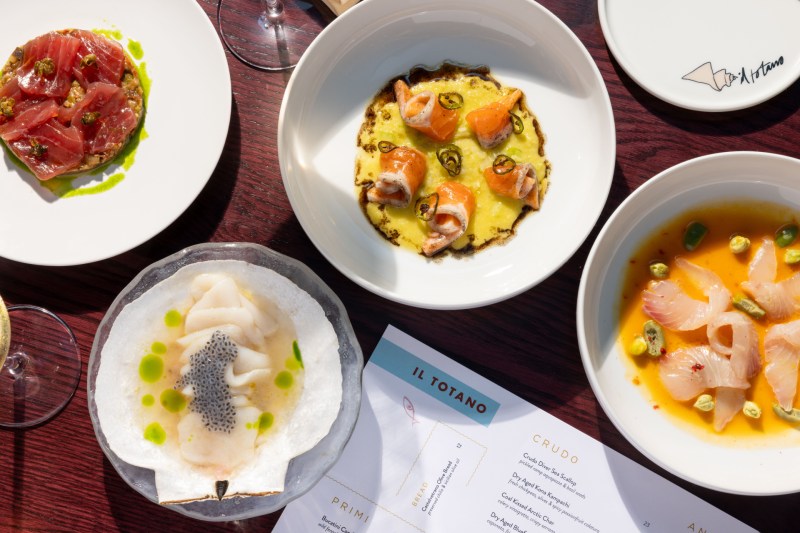Chef Harold Dieterle, Top Chef winner and New York culinary legend of Perilla and The Marrow, is back after a decade away from the restaurant game. At his new restaurant Il Totano, Chef Dieterle is focused on modern Southern Italian cuisine, particularly seafood. And one of the most vibrant themes on the menu is dry-aged fish with Sicilian flavors, something Chef Dieterle found inspiration in during the pandemic.
“I’m an extremely avid fisherman,” explains Chef Dieterle. “I got into dry-aging fish during the pandemic, where there was really nothing to do, and nobody felt comfortable doing anything except kind of being out on the open water.”
Preparing dry-aged fish

For dry-aged fish, one key thing to consider, according to Chef Dieterle, is the yield loss and the size of the fish. The yield loss of dry-aged fish when it’s done aging (two to three days or more, depending on the size of the fish) will be net around a 10 to 15 percentage loss.
At Il Totano, there are currently three dry-aged fish options on the menu: dry-aged kampachi, dry-aged tuna, and dry-aged branzino. The tuna and kampachi are served raw while the branzino is grilled. For Chef Dieterle, there were several reasons why he chose to feature these three fish. First, tuna was a fish he was very familiar with through fishing and cooking. But the kampachi and branzino were chosen for both flavor and size since Il Totano only has one dry-ager. “So the other two fish that I picked out were because I wanted smaller fish that I knew I could dry age in a quicker amount of time,” Chef Dieterle explained.
What ingredients pair well with dry-aged fish?

To know what ingredients pair well with dry-aged fish, it’s important to understand the flavors of the fish itself. Depending on the fish, the flavors and texture will differ. Tuna firms up, getting meatier and more intense. For kampachi, the fat heightens after it ages, making it richer. For the branzino, which gets grilled at Il Totano, it’s all about the skin. “The skin almost gets like a Peking duck–type skin. Very glassy and crunchy, which is pretty cool,” Chef Dieterle said.
While the technique of dry-aging fish comes from Japan, Chef Dieterle infuses his dry-aged fish with Sicilian and other global influences. In particular, acidity and salt play a central role in how Chef Dieterle flavors his dry-aged fish. Lemon juice, red wine vinegar, and even passionfruit are all ingredients Chef Dieterle uses to add that acidic bite to dry-aged fish. Because of these flavor profiles, Chef Dieterle recommends pairing dry-aged fish with wines that are crisp with a bit of salinity. An excellent choice, according to Chef Dieterle, is a Sicilian white wine.




